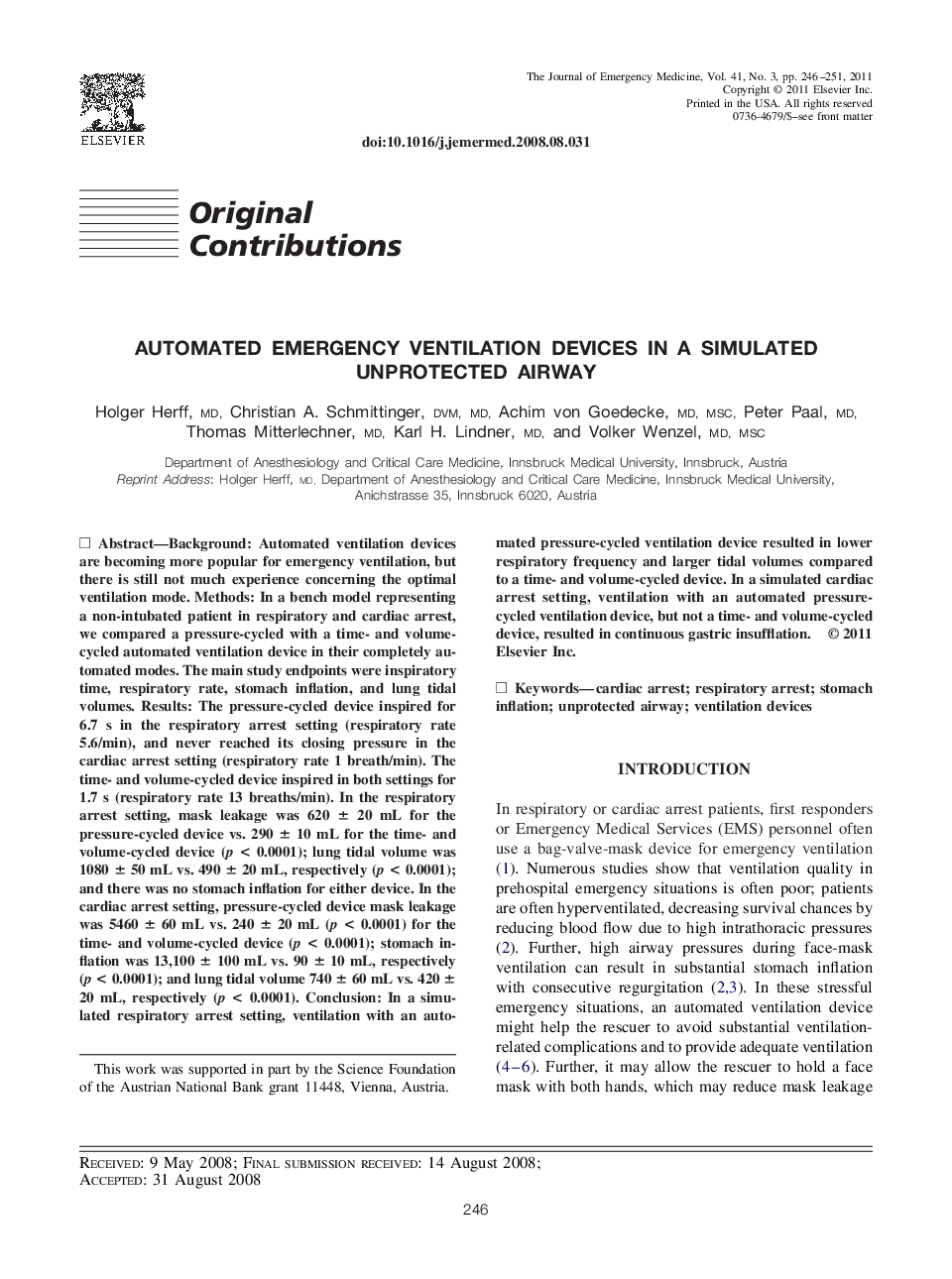| Article ID | Journal | Published Year | Pages | File Type |
|---|---|---|---|---|
| 3247844 | The Journal of Emergency Medicine | 2011 | 6 Pages |
Background: Automated ventilation devices are becoming more popular for emergency ventilation, but there is still not much experience concerning the optimal ventilation mode. Methods: In a bench model representing a non-intubated patient in respiratory and cardiac arrest, we compared a pressure-cycled with a time- and volume-cycled automated ventilation device in their completely automated modes. The main study endpoints were inspiratory time, respiratory rate, stomach inflation, and lung tidal volumes. Results: The pressure-cycled device inspired for 6.7 s in the respiratory arrest setting (respiratory rate 5.6/min), and never reached its closing pressure in the cardiac arrest setting (respiratory rate 1 breath/min). The time- and volume-cycled device inspired in both settings for 1.7 s (respiratory rate 13 breaths/min). In the respiratory arrest setting, mask leakage was 620 ± 20 mL for the pressure-cycled device vs. 290 ± 10 mL for the time- and volume-cycled device (p < 0.0001); lung tidal volume was 1080 ± 50 mL vs. 490 ± 20 mL, respectively (p < 0.0001); and there was no stomach inflation for either device. In the cardiac arrest setting, pressure-cycled device mask leakage was 5460 ± 60 mL vs. 240 ± 20 mL (p < 0.0001) for the time- and volume-cycled device (p < 0.0001); stomach inflation was 13,100 ± 100 mL vs. 90 ± 10 mL, respectively (p < 0.0001); and lung tidal volume 740 ± 60 mL vs. 420 ± 20 mL, respectively (p < 0.0001). Conclusion: In a simulated respiratory arrest setting, ventilation with an automated pressure-cycled ventilation device resulted in lower respiratory frequency and larger tidal volumes compared to a time- and volume-cycled device. In a simulated cardiac arrest setting, ventilation with an automated pressure-cycled ventilation device, but not a time- and volume-cycled device, resulted in continuous gastric insufflation.
